Economic Effects
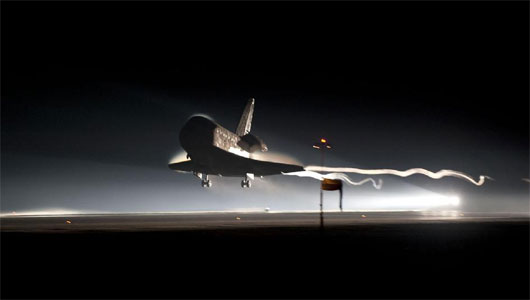
"Atlantis touching down for the last time in 2011.
This ended the 30 year space shuttle program"
- Large communities of space engineers lost their jobs due to the end of the manned space program.
- In 2011, America's human space flight programs cost around $7 billion a year.
- The Apollo program created over 375,000 jobs.
Quantifying the economic impact of the space program is extremely hard to do as there are so many direct and indirect advancements that it has created. Sure, we can look at how many jobs NASA has created or how many NASA employees lost their jobs when the manned space program ended, but really there is a much bigger picture to consider. Money alone is not the way to gauge the worthiness of the cost of exploring space.
Budget
When NASA began as a result of the space race and natural curiosity, it had the support of many groups of people in the USA. It was a matter of national pride and security. People put their support behind the space program. Today a cloud hangs over the NASA programs. In a time where the country is looking at ways to save money, NASA funding is on the chopping block. When the space program was started in early 1960 NASA organized, designed and constructed various facilities: The Marshall Space Flight Center in Huntsville, Alabama, the John F. Kennedy Space Center in Brevard County, Florida, the Manned Spacecraft Center in Houston, Texas; the Michoud Facility in New Orleans, Louisiana, and the Mississippi Test Facility in Hancock County, Mississippi.
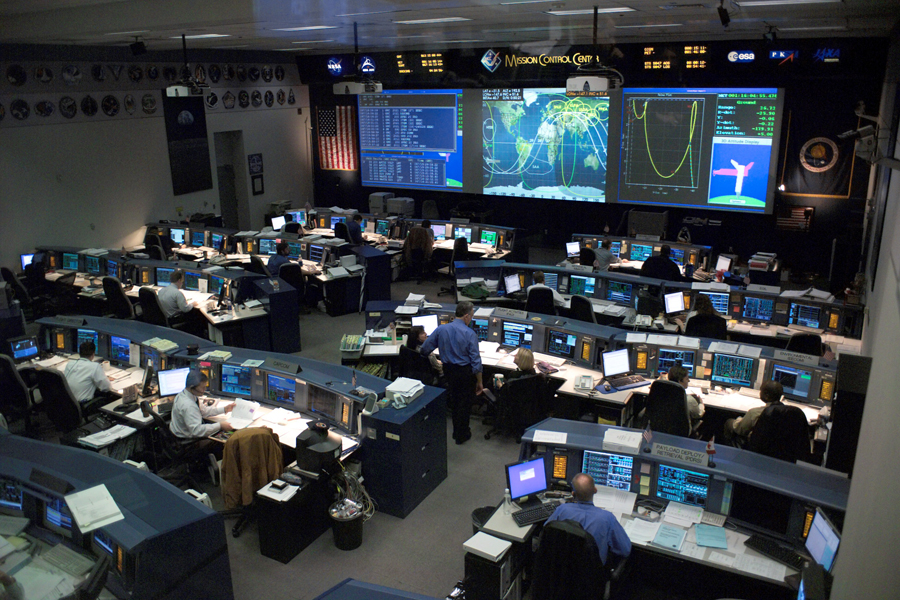
These facilities needed people from painters to engineers, from food service people to astronauts many hired from the neighboring communities, therefore opening up job positions in many industries. The launch facilities increased tourism into those areas, influenced growth of communities, businesses and in general improved the nearby areas economies. The costs were high but the country a pride that didn't have a price.
NASA's budget peaked in the 1964-1966 period during the research and development phase of the Apollo program leading up to the first moon landing, at roughly 4% of the total federal budget. The Apollo program created jobs for more than 34,000 NASA employees and 375,000 employees of industrial and university contractors.
In 2011, America's human space flight programs cost around $7 billion a year. That's pennies per person per day. In 2006, according to the USDA, Americans spent more than $154 billion on alcohol and $10 billion a month in Iraq.
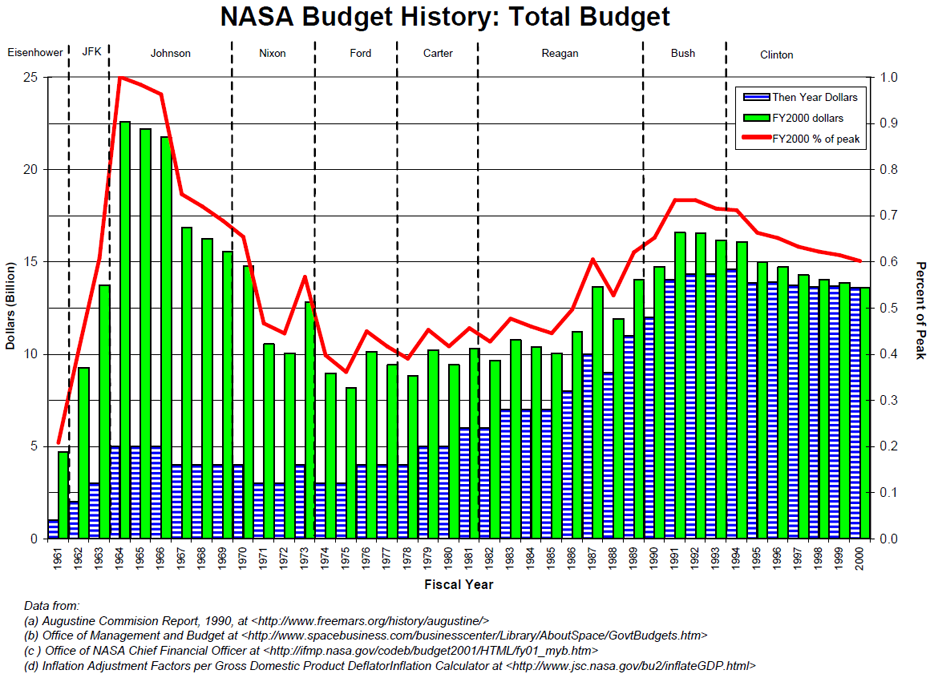
Over the Years
NASA has received 526.18 billion dollars from 1958 to 2011. This comes to approximately 10 billion dollars per year. The "Economic Impact of Stimulated Technological Activity" concluded that, "$25 billion in 1958 dollars spent on civilian space Research & Design during the 1958-1969 period has returned $52 billion through 1971 -- and will continue to produce pay offs through 1987, at which time the total pay off will have been $181 billion".
The Effect of Joint Ventures
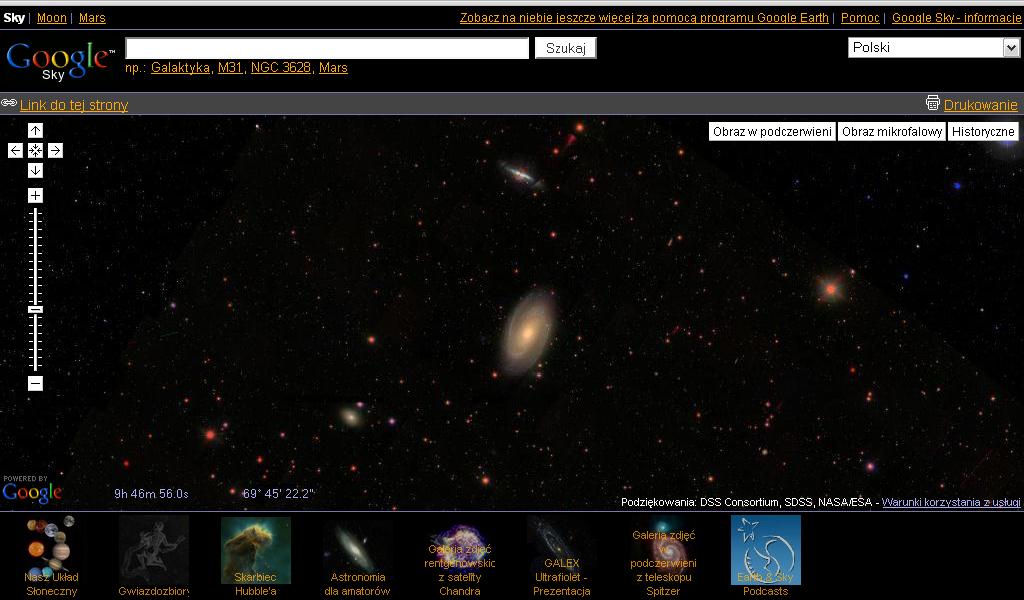
In 2006 Google and NASA signed an agreement to get together on a joint venture. From this group came Google Moon and Google Mars projects. These are interactive products which use NASA's database of high resolution images to immerse the user in a three-dimensional experience. Collaboration between the Carnegie Mellon University, NASA and Google Inc. established the 'Global Connection Project'.
From this project which had its origin with the Martian Rovers program enabled Google to stitch together a mosaic of panoramic photographs to make high resolution images? These images have been used to create applications for aiding disaster relief. The economic benefits of these programs are not known since the funds raised are from advertising dollars.
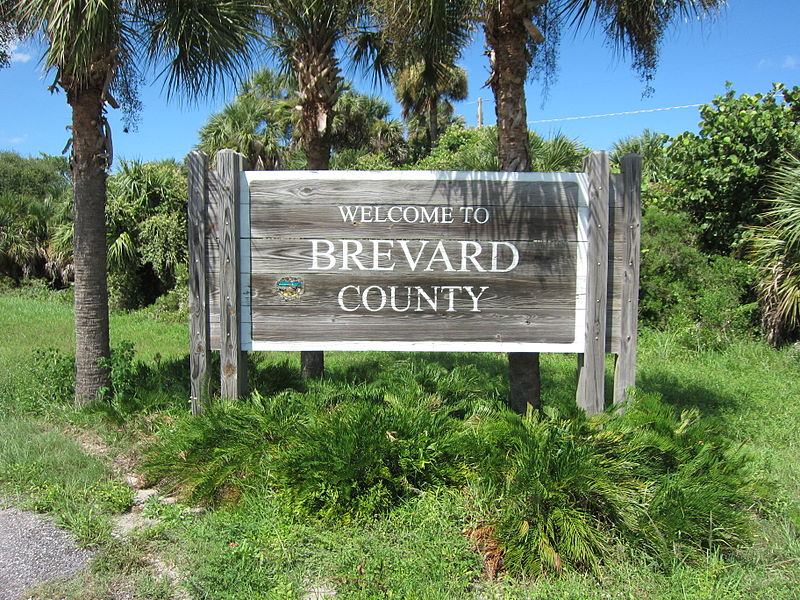
The End of the Shuttle Program
The space program has been great, good and bad. The success of the programs traveling into the edges of our solar system, taking pictures of other planets and stars, landing and excavating other planets all were part of NASA's success. When the shuttle program shut down it released a ripple effect that traveled throughout the economies of those cities which for years supported the program. Florida's Brevard County was hit especially hard. Nine thousand (9000) people were laid off from the space program.
In other Brevard county areas the funding was less than the state average. Wages for space workers was above the average for Brevard County workers but slightly below the average for state workers. What does this all mean? There is no doubt that the space shuttle program attracted many people, business and money to the Brevard County area. It seems that where many people who worked at the space center benefited from working there while many in the surrounding county did not. Closing the shuttle program and cancelling the Constellation program has had a devastating effect on that community. The community awaits the public sector to step in and save the day.
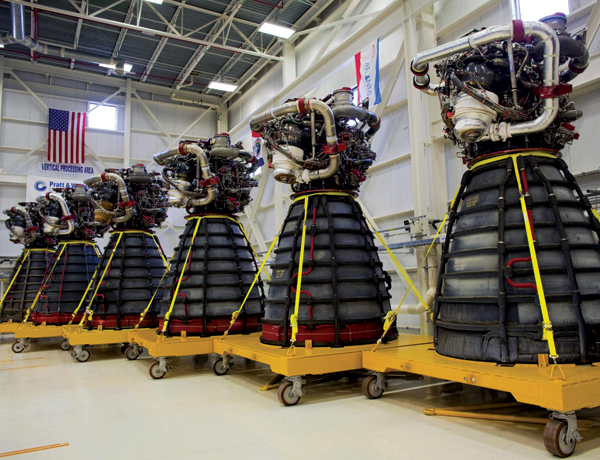
Expense of Space Shuttle Parts
The government funded the space program even when shuttle missions were unrealistic and dangerous. Just maintenance of thermal protection tiles was expensive and there were more than 30,000 tiles that needed to be individually inspected. The tiles also needed to be specifically manufactured for only one specific slot on a shuttle. Not to mention the prices for rocket fuel, just operational and maintenance costs was already high.
Public Support
The moon landings were driven by public sentiment and the belief that the US needed to win the space race to ensure military superiority over the Soviet Union. If we were faced with the knowledge that another asteroid impact was imminent and were forced to colonize off-world to ensure the survival of civilization, would those that presently seek to challenge the justification for NASA's federal budget be so vocal?
.jpg)
How can we measure the cost saving achieved by the technology that NASA has brought to our hospitals, work places and homes?
Benefits to the US Economy
Space exploration will eventually allow us to establish a human civilization on another world as a hedge against the type of catastrophe that wiped out the dinosaurs.
We explore space and create important new technologies to advance our economy. It is true that, for every dollar we spend on the space program, the U.S. economy receives about $8 of economic benefit. Space exploration can also serve as a stimulus for children to enter the fields of science and engineering.
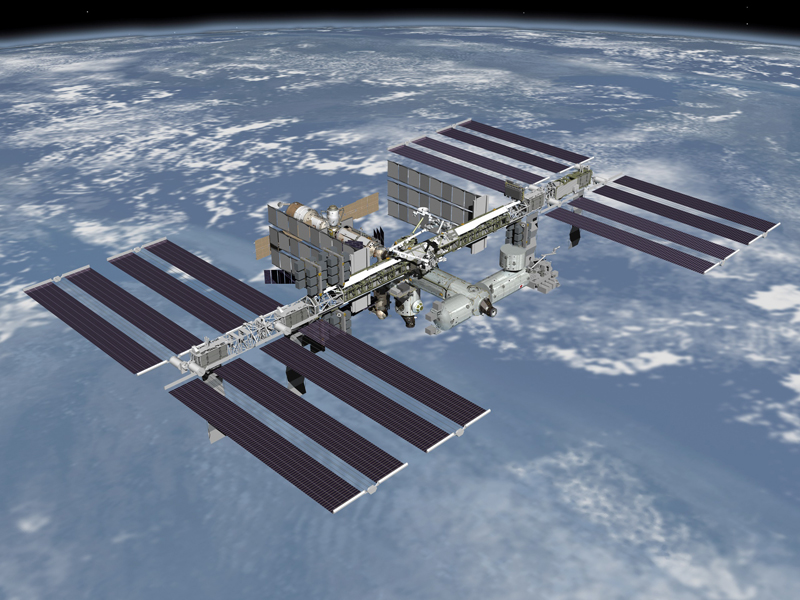
Space exploration in an international context offers a peaceful cooperative venue that is a valuable alternative to nation state hostilities. One can look at the International Space Station and marvel that the former Soviet Union and the U.S. are now active partners. International cooperation is also a way to reduce costs.
National prestige requires that the U.S. continue to be a leader in space, and that includes human exploration. History tells us that great civilizations dare not abandon exploration.
How can we accurately evaluate the cost saving of the more accurate weather prediction that NASA has brought us for farming or disaster prevention? How much time and money do we save through the use of GPS navigation systems or satellite based communications? How much money do we save through the use of improved insulation materials developed by NASA? How many lives have been saved by their smoke detection technology?
Conclusion
Evidence seems to establish that space exploration is not a drain on the economy; it generates infinitely more wealth than it spends. Royalties on NASA patents and licenses currently go directly to the U.S. Treasury, not back to NASA.